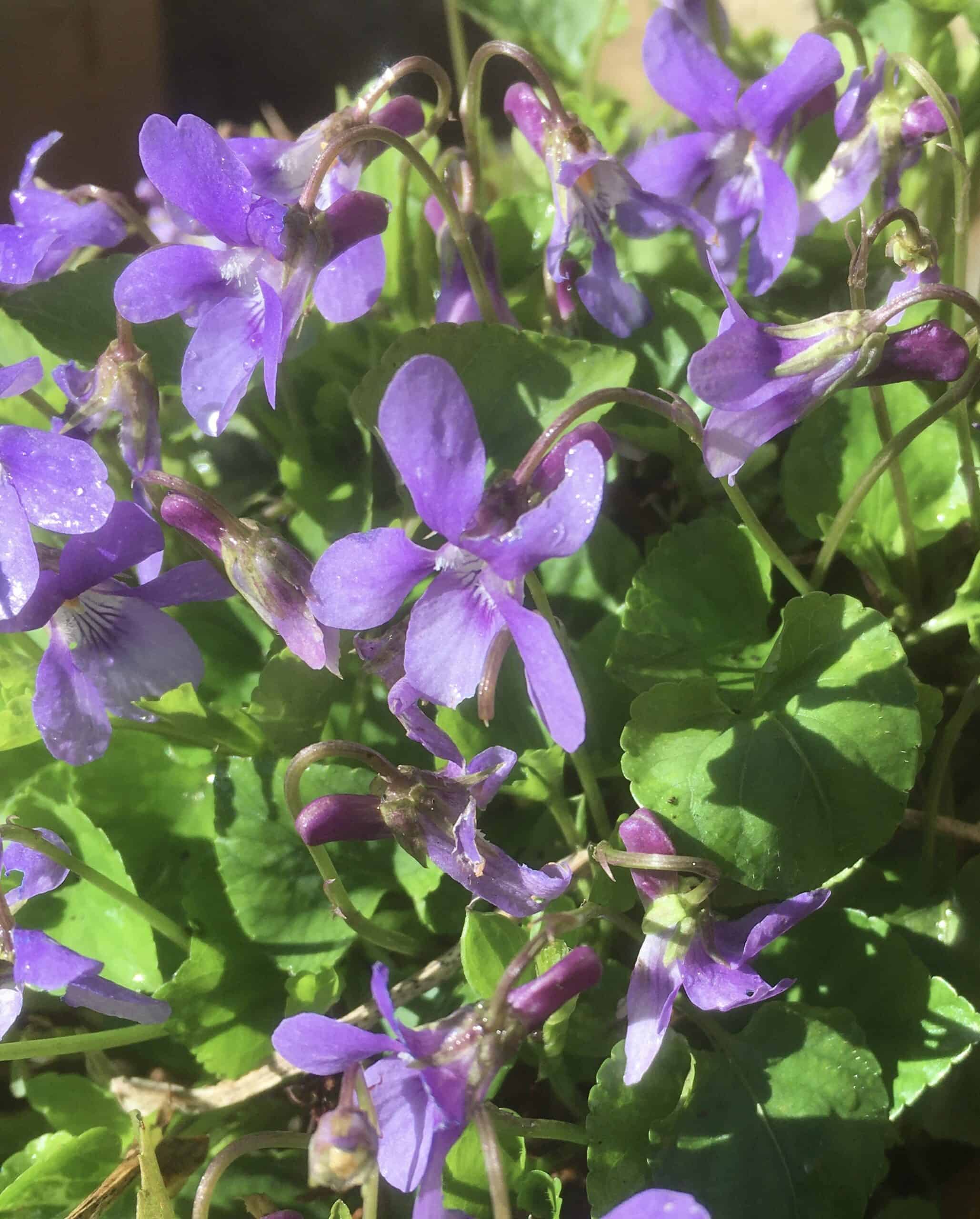Sweet Violet (Viola odorata)
Flowers: Late March to April. Height: 15cm (6in)
In Greek mythology, Zeus had a lover named Io. In a fit of jealousy, his wife Hera turned her into a white heifer so Zeus created violets to give her something lovely to graze upon. The Ancient Greeks were obsessed with violets and wore crowns of them to relieve headaches and cure insomnia. They made violet-scented perfume and the flower was so popular it became the symbol of Athens. The Romans used to make Violet wine, and strewed the sweet scented flowers on floors. During the Middle Ages, monks called the Violet ‘an Herb of the Trinity’ because they were found in three primary colours of white, yellow and mauve/blue. Our ancestors believed these plants to be flowers of change, transition, and a symbol of the cycle of death and rebirth.
Medicinal: The leaves and flowers were made into a medicine and used as a poultice to cool any heat or hot swellings in the body and known to soothe eye inflammations. Hildegard de Bingen’s ‘Causes and cures’ (c.1151) provided a recipe for oil of violets as a cure for blurred vision. A syrup of violet flowers with honey was an effective cough remedy, used for diseases of the lungs as well as for back pain and cystitus. Powdered flowers taken in water relieved the falling-sickness (epilepsy) in children.
Magic & Myth: In medieval times the violet was thought to provide protection from all things of an evil nature and were often strewn around the house.
Culinary: Violets were commonly grown in medieval kitchen gardens and its young leaves and flowers were eaten in salads. There is a 15th century recipe for ‘Vyolette’, a pudding made from violet petals, almond milk, and rice flour.



